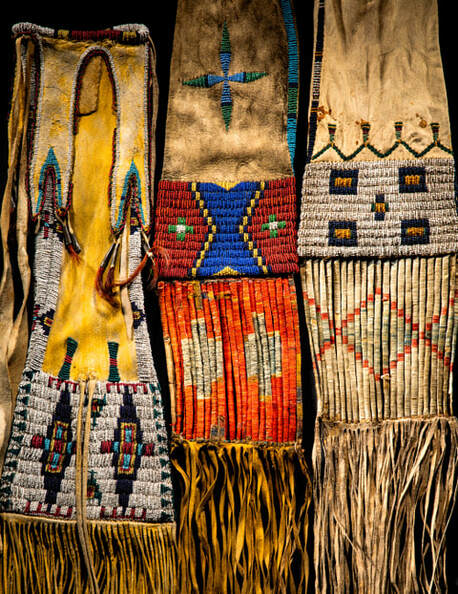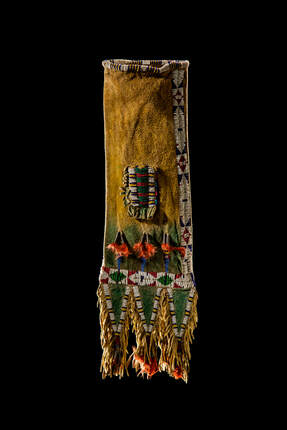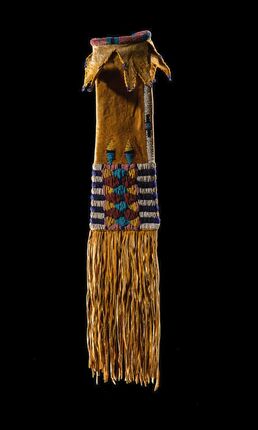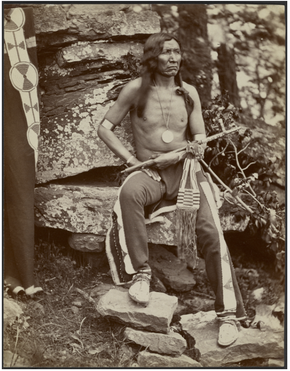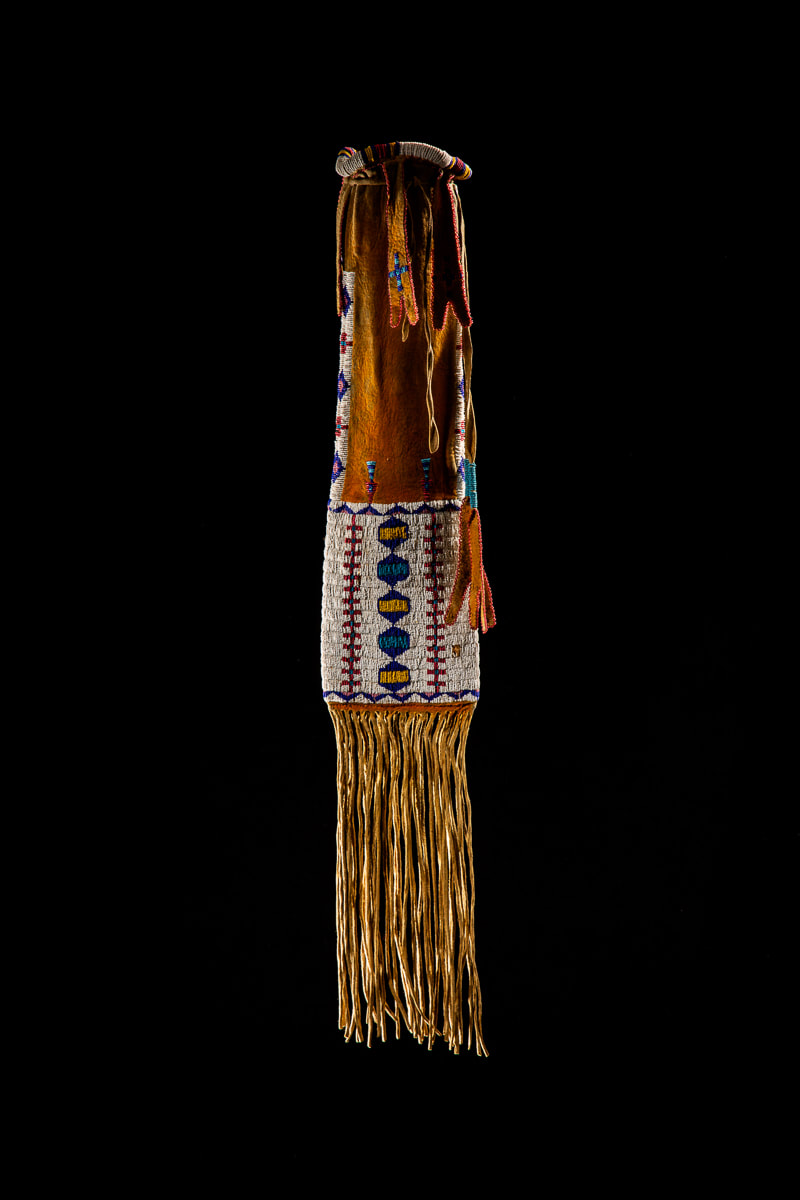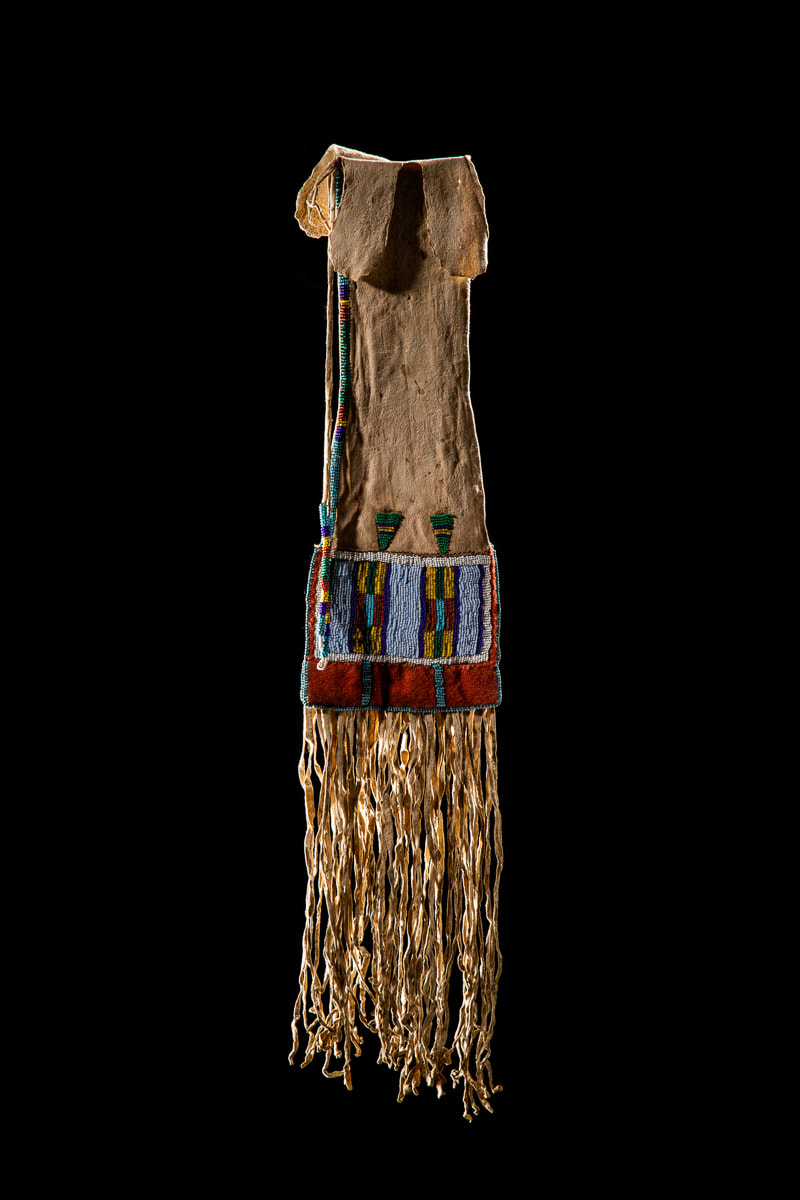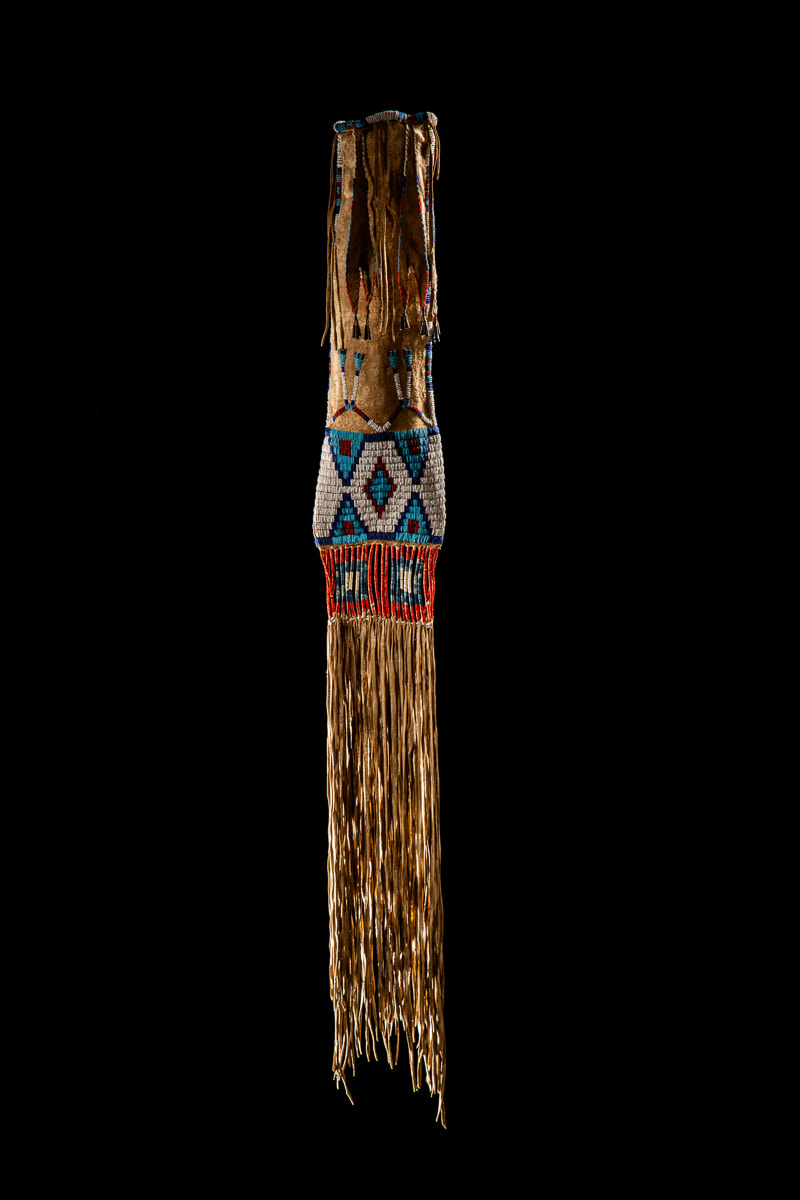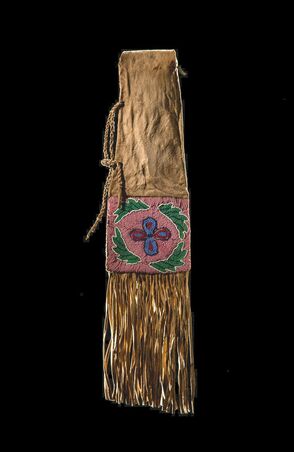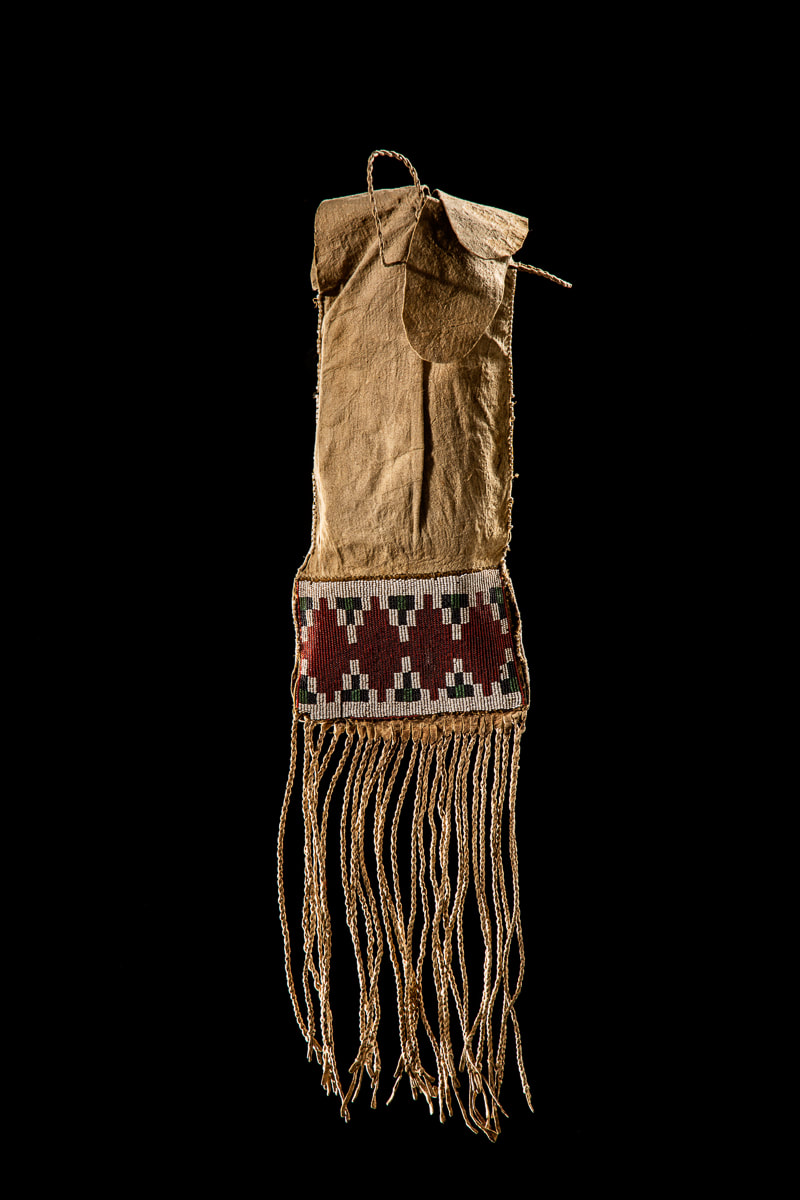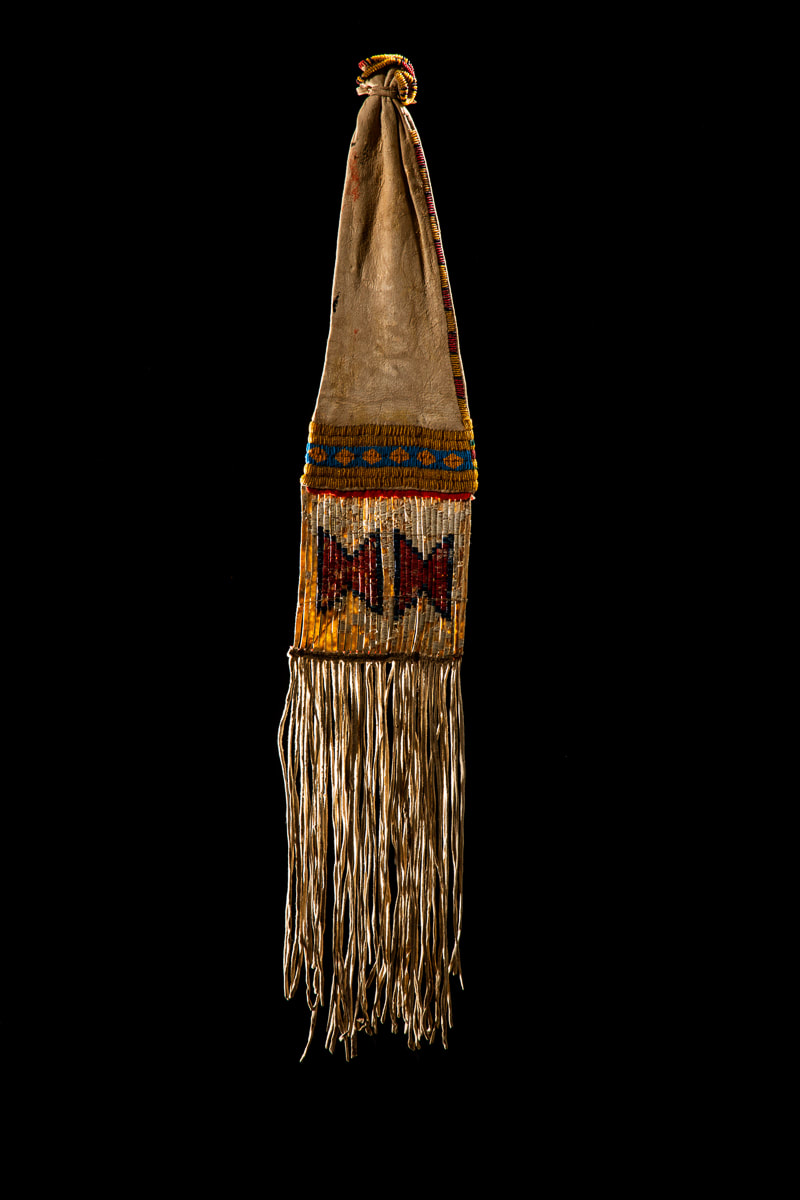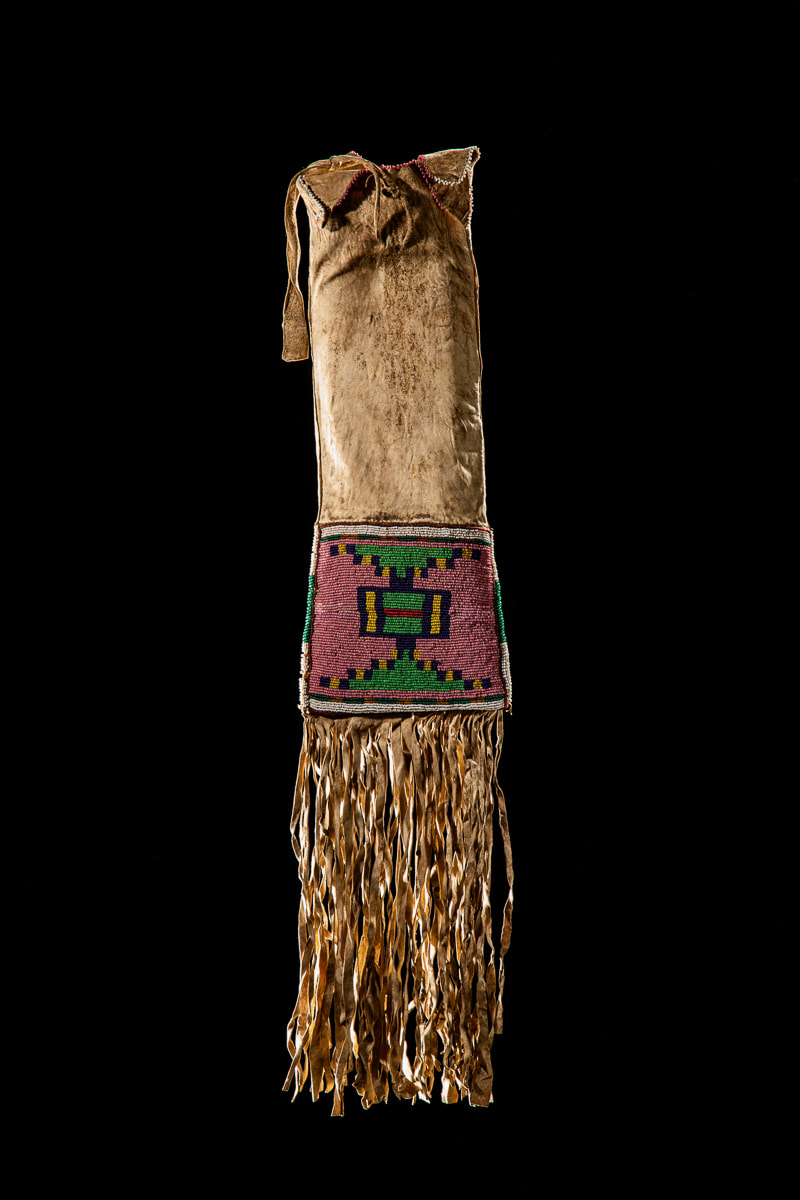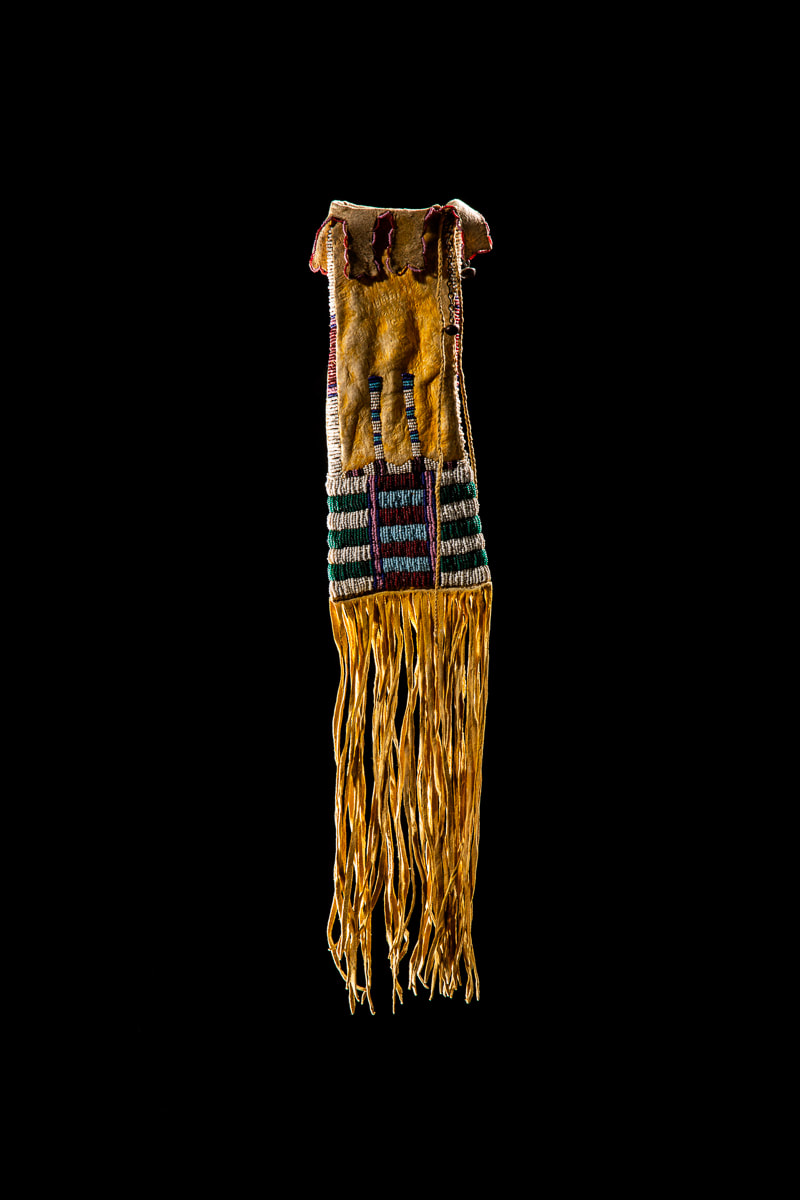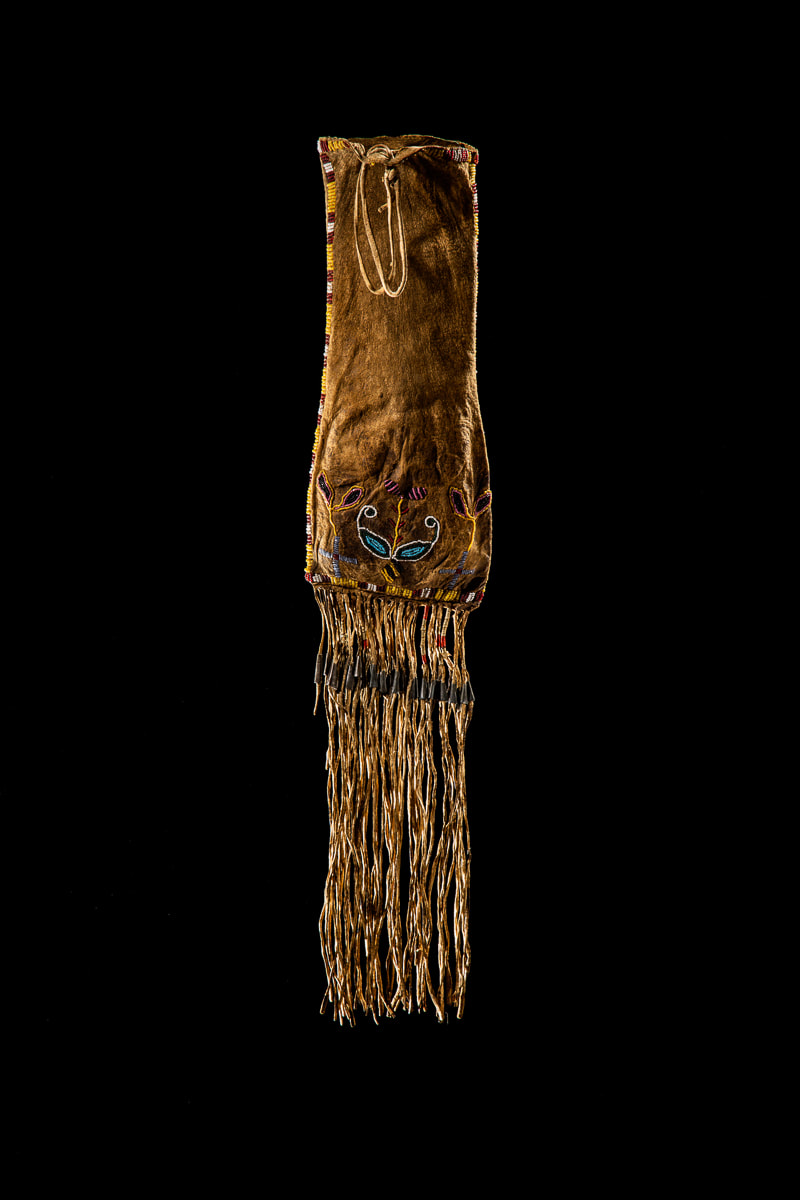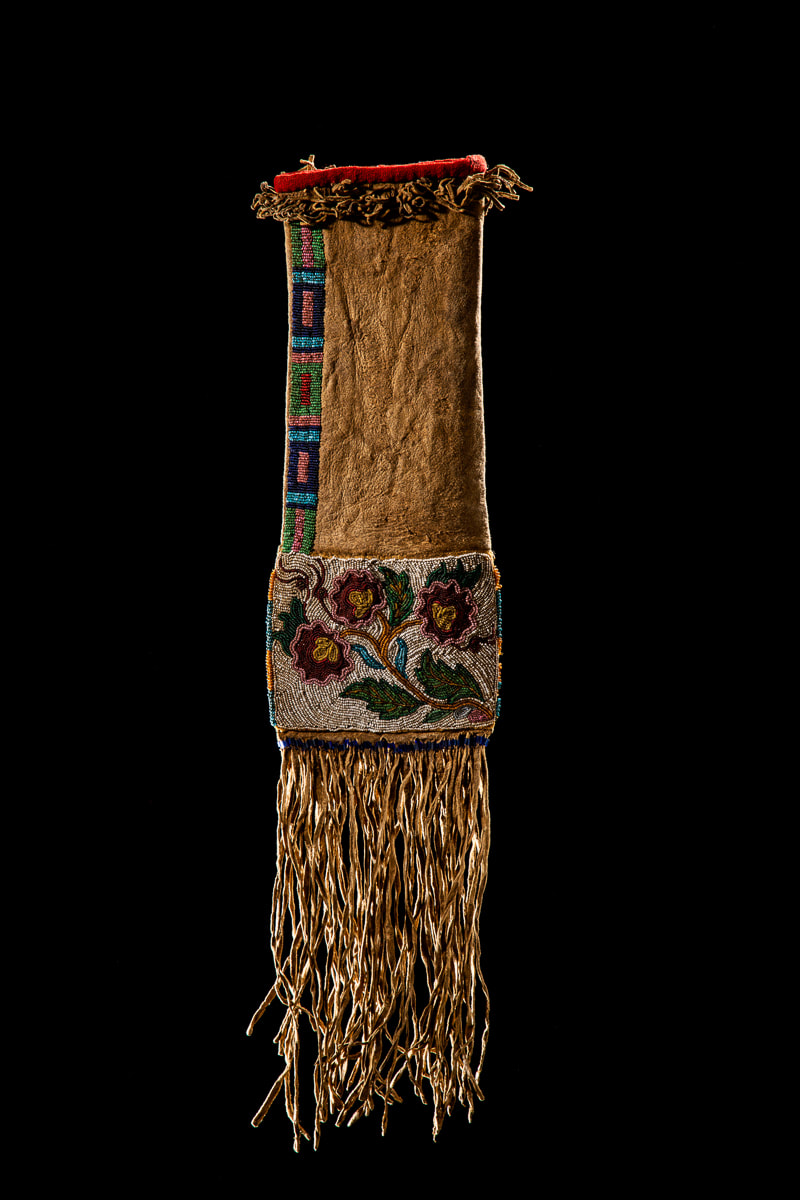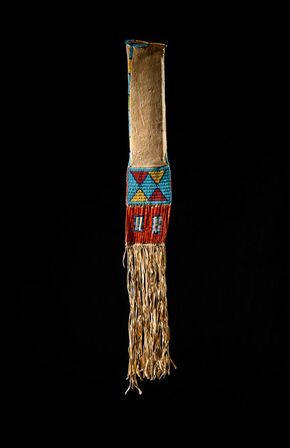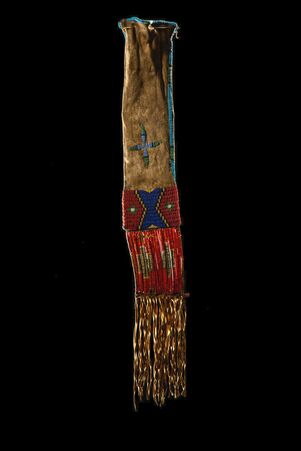19th CENTURY PLAINS INDIAN PIPE BAGS
Images and Essay
on view in gallery from
March 4 - March 28, 2019
|
Throughout the 19th century, Native American female artists across North America created and decorated the bags used by men to carry tobacco and pipes. The decorated pipe bag was an essential part of each man’s wardrobe. How essential? Witness the photograph by John Hillers taken of a Cheyenne warrior in the 1875.(1) The pipe bag is his only accoutrement other than the pipe itself. In photos of various settings from Washington, D.C. delegation photographs to in situ images like Hillers, the pipebag is a nearly indispensable manifestation of who the man says he is. |
|
On the Plains, there was a general style of striped pony-beaded design that was found regionally among different tribal groups during this period.. It wasn’t until the introduction of the smaller and more colorful beads around 1845 that the different tribal styles developed (3). When the reservation period began, there was an increase in production for the marketplace that corresponded with an increase in art supplies. By the time the 20th century began, the traditional ways had evolved and the standard pipebag was much wider than before and with more beadwork, generally on a white background. Each generation should have its own ways but I prefer the older ones from the 1870’s, & 80’s, more carefully made, more finely tanned and, to my eye, more beautifully designed.
|
|
Some believe that Native American beadwork reached an artistic height in color, design and production in a period that extended from the 1860’s into the 1890’S. During this time, the Native American artist experienced an upheaval in the traditional lifeways, as well an abundance of new & plentiful art supplies. This confluence of events, along with a developing marketplace for these handcrafted goods, led to an artistic output not previously seen. For the Plains Indian, the pipebag was second only to the moccasin in terms of what the marketplace desired. The height of pipebag design is from the time of the Indian Wars until the onset of the 20th century. The earlier bags generally were slimmer and longer than the than the ones post-1900. Design is generally less baroque than the later bags that often have extended design elements on a white background. |
John Molloy Gallery is pleased to present this exceptional group of pipe bags from this time period.
Please continue to scroll down to view the entire show.
Pipebags Photo Credit: Stan Schnier
(1)Photo Title: Yellow Bear, Okmulgee, Indian Territory May 11, 1875; Credit: John K. Hillers (American, 1843 - 1925), © J. Paul Getty Trust
(2) American Indian Art, Volume 24, Number 2, Spring 1999, pg.3, Images
(3) THE PLAINS INDIANS Artists of Earth and Sky by Gaylord Torrence, Musee du Quai Branly, 2014, p.58

